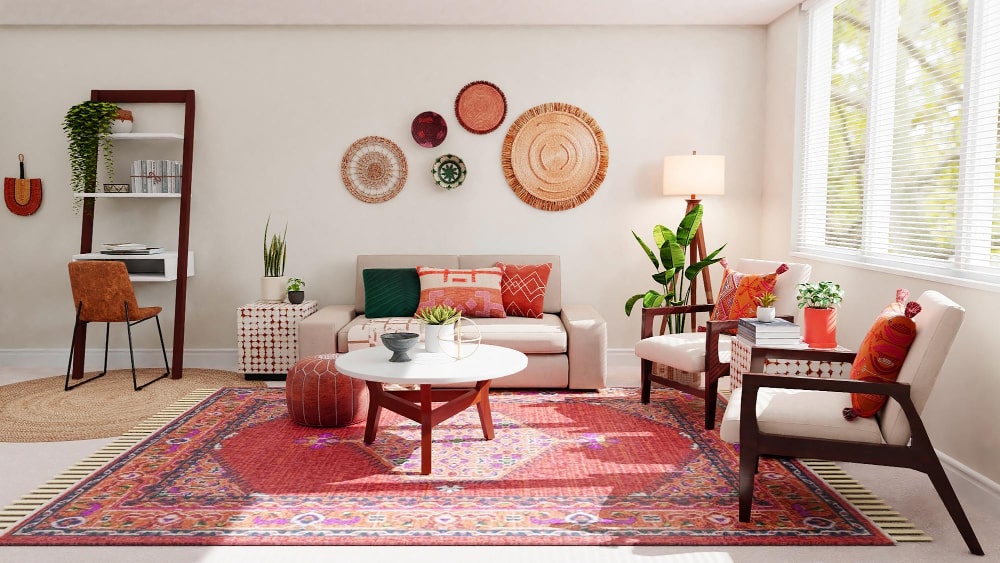Hire top miami interior design professionals for customized luxury spaces.
Hire top miami interior design professionals for customized luxury spaces.
Blog Article
Transform Your Home With Crucial Principles of Interior Decoration and Aesthetic Appeals
By recognizing the impact of shade theory and the significance of structure and patterns, one can develop spaces that are not only aesthetically attractive yet additionally deeply personal. Achieving this stability includes even more than mere design; it incorporates a critical arrangement and a keen understanding of how each aspect engages within an area.
Understanding Color Theory
Shade theory is a fundamental element of indoor layout that significantly affects state of mind, understanding, and overall visual. Recognizing the principles of color theory enables designers to produce spaces that reverberate psychologically with owners while meeting practical requirements (luxury interior design). Shades can be classified right into 3 main kinds: main, second, and tertiary. Each group plays a vital function in developing consistency within an area.
The psychological effect of colors is extensive; cozy colors such as reds and oranges stimulate energy and warmth, while cool tones like blues and eco-friendlies promote calmness and harmony. The usage of complementary shades boosts aesthetic rate of interest, developing striking contrasts that can raise a space's allure.
Neutral shades, on the other hand, serve as a functional background, allowing various other design aspects to radiate. It is necessary to take into consideration variables such as lighting and the space's function when picking a color scheme, as these can modify the perception of colors throughout the day.
Eventually, a well-considered color pattern can transform a room, promoting a feeling of convenience and style that straightens with the occupants' preferences. Mastery of color theory is, for that reason, a crucial skill for any kind of interior developer intending to produce harmonious and inviting atmospheres.
Achieving Equilibrium in Design
Exactly how can designers attain a sense of balance in their rooms? Achieving equilibrium in layout is fundamental to creating unified insides.
Asymmetrical equilibrium, on the other hand, counts on differing aspects that still achieve a natural appearance. This strategy enables for even more dynamic and casual plans, providing passion while preserving stability. By very carefully choosing varying sizes, shades, and structures, developers can produce an aesthetically engaging area that feels well balanced yet energetic.
Radial equilibrium stresses a central centerpiece with elements radiating exterior. This style is frequently seen in round layouts, where furnishings and style create a cohesive border that attracts the eye inward.
Eventually, attaining balance needs thoughtful factor to consider of range, percentage, and the relationships between aspects. miami interior design. By skillfully applying these balance principles, designers can transform areas right into settings that really feel both cosmetically pleasing and functionally harmonious, enhancing the overall experience for residents
Value of Spatial Understanding

An eager feeling of spatial recognition permits developers to identify prime focus within a room, directing the customer's focus to crucial attributes while keeping a total feeling of unity. It additionally assists in the strategic placement of lighting, which can drastically influence the understanding of area and mood. Comprehending spatial connections allows the designer to provide to the details requirements of occupants, guaranteeing that each area offers its designated function without jeopardizing aesthetic appeals.
Ultimately, spatial recognition is critical for maximizing the possibility of any type of interior room. By very carefully thinking about the interplay in between dimensions, layout, and feature, designers can develop atmospheres that not only fulfill useful requirements yet likewise stimulate a sense of convenience and appeal, enhancing the total living experience.
Incorporating Appearance and Patterns
Accepting a diverse array of structures and patterns can considerably boost the visual and responsive appeal of an interior room. The calculated usage of numerous materials-- such as timber, steel, material, and rock-- produces depth and rate of interest, making an area feel extra welcoming and vibrant. Combining smooth surface areas with rough structures can develop a balance that draws the eye and engages the senses.
When including patterns, consider both range and repeating. Huge patterns can offer as prime focus, while smaller, refined layouts can complement various other components without overwhelming the area. Layering patterns, such as pairing flower paddings with candy striped throws, adds complexity and a feeling of consistency if executed thoughtfully.
It is additionally crucial to maintain a natural shade scheme, making certain that appearances and patterns interact instead of compete for attention. By choosing a few essential textures and like this patterns, you our website can create an unified visual that mirrors your individual style while enhancing the total setting of the space. Ultimately, the careful unification of these components can transform a mundane room right into an advanced atmosphere rich with personality and warmth.
Personalizing Your Room
Producing a space that mirrors your individuality is important to achieving an absolutely welcoming environment. Customization in interior design permits you to infuse your unique design and interests right into your home, transforming it from a mere sanctuary into a refuge that talks to who you are. Begin by picking a shade palette that reverberates with your emotions-- bold tones can stimulate, while soft tones provide tranquility.
Integrate artwork and decoration that show your interests, whether it be traveling, nature, or abstract concepts. Presenting individual collections, such as publications, photographs, or keepsakes, can evoke valued memories and create prime focus within a room. In addition, take into consideration customizing useful pieces, like upholstered furnishings, to align with your aesthetic choices.

Verdict
In final thought, the makeover of a home through the crucial principles of interior decoration and looks necessitates an extensive understanding of shade concept, equilibrium, spatial awareness, structure, and customization. Each component adds useful content considerably to producing an unified and useful living environment - Architecture Firm. By attentively integrating these principles, individuals can improve the visual charm and psychological vibration of their rooms, ultimately fostering a home that reflects distinct identities while supplying convenience and functionality
Report this page